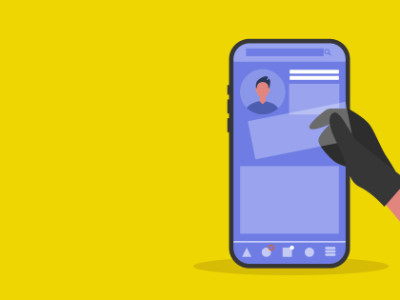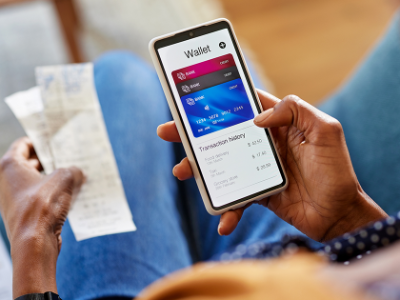It’s one of life’s most panicked issues: what to do when you lose your wallet (either on your own or to a thief). A lost wallet or stolen purse can equal a major headache, since it gives a thief plenty of information to steal your identity and take advantage of your good name. If you act quickly, however, there are things you can do to minimize the damage. The steps below walk you through what to do.
1. Make sure your wallet was really stolen.
The advice in this article assumes your wallet was permanently lost or stolen, not just misplaced. If you follow these steps and do things like cancel your accounts only to find your wallet later, you may regret the headache you’ve created! To make sure it’s not somewhere in your home, office or car, spend a little time retracing your steps. You might even want to call any businesses you’ve been to that day.
2. Call your bank.
You may have to close and reopen the account, especially if your checkbook was in your stolen wallet or purse. You will also need to cancel your debit card and get a new one. Check for any fraudulent charges that may have already occurred and report those as well.
According to the Federal Trade Commission, if you report the stolen card within two business days, you’re only liable for up to $50 in fraudulent charges. If you report the theft within 60 days of receiving your statement you’re liable for up to $500. After 60 days, you could be liable for all fraudulent charges.
3. Request replacement credit cards.
Call your credit card companies to report the theft, and request replacement cards with new account numbers. Also check your accounts for any fraudulent charges that may have already been made and report those as well. Make sure you get the same credit limits and interest rate as before, and that they transfer any reward points to your new card.
4. Track your phone.
If your phone was inside your stolen purse, you may want to try tracking your phone while it still has battery life left:
- For Android phones, use Android Device Manager to locate, call, lock or erase your phone. Note that in order for this to work, your phone’s location access needs to be on and you need to have been signed into your Google® account on your phone.
- For iPhones® and other Apple® devices, log on to icloud.com. If you’ve activated “Find My iPhone,” there should be an icon for it on the iCloud dashboard. You can use Find My iPhone to locate, call, or erase your phone.
5. Place a fraud alert.
Contact at least one of the three credit bureaus and ask them to file a (free) fraud alert. This will make it harder for someone to fraudulently open an account using your identity. The bureau you contact is required to tell the other two, so you only have to contact one of the following:
- Equifax®: Equifax.com/CreditReportAssistance; 1-888-766-0008
- Experian®: Experian.com/fraudalert; 1-888-397-3742
- TransUnion®: TransUnion.com/fraud; 1-800-680-7289
6. File a police report.
File a report with your local police department. They’ll want to know when and how your wallet or purse was stolen, what it looked like and what was in it. Make sure you get a copy of the report.
7. Make a list of everything else you lost and then start making calls.
Write down everything that you can remember was in your wallet or purse and proceed as follows for each item, in the priority order below. Also start a call log and list the date, time and people you talk to. (You should have already called your financial institutions regarding your credit cards, debit cards and checks — see numbers two and three above.)
- Driver’s license: Call your state’s Department of Transportation to report the theft and request a replacement. If you later find out that someone has been using your license, ask to have your license number changed.
- Social Security card: You shouldn’t generally carry your Social Security card in your wallet. But if you end up with a stolen Social Security card because it is in your wallet when it’s taken, call your local Social Security Administration office to report it stolen. You can also check the Social Security Administration website to see if you are eligible to apply for a replacement card online. Again, avoid having your Social Security card stolen by storing it in a secure location or safe deposit box — not your wallet or purse.
- U.S. passport: If you’re in the United States when your passport is stolen, call the U.S. State Department at 877-487-2778 to report the theft and request a new passport. If you’re outside of the United States, contact the nearest U.S. embassy or consulate. You can also report a lost or stolen passport online.
- Other forms of ID: If you have a military ID, student ID, work ID or other forms of identification in your wallet, contact the appropriate organizations to report them missing.
- Insurance cards: If your health or auto insurance cards are stolen, contact your insurance companies to request a new policy number and cards to prevent the thief from using your insurance fraudulently.
- Membership cards: Call the issuers of any membership, discount or rewards cards and annual passes, such as retailers, AAA, AARP®, your health club and the library. Report the cards stolen, ask about their policy regarding new account numbers and request new cards.
8. Change the locks.
If your purse was stolen and contained your keys, get the locks on your home and car changed as soon as possible.
9. Order a credit report.
Visit annualcreditreport.com to order your free report. If you’ve already ordered one this year, you can pay to get another report right away or you can request a second free report due to fraud, but that process may take longer. Once you receive your report, note any fraudulent accounts or transactions on the report.
10. Update your automatic payment information.
If you have automatic payments that come out of your bank account or credit cards, input your new account and card information as soon as you receive them to avoid late fees, cancelled services or a ding on your credit report.
All company names and trademarks are the property of their respective owners.



